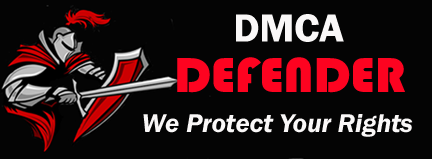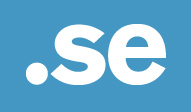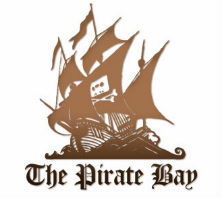A new court test of fair use on the Internet appears likely due to a lawsuit filed June 7 by photographer Kai Eiselein against BuzzFeed. Eiselein, who is demanding damages that could total over $3.6 million, claims that BuzzFeed infringed his copyright in a photograph he posted on Flickr in 2009 showing a soccer player heading a ball.
According to Eiselein, BuzzFeed included the photo without his consent in a collection titled “The 30 Funniest Header Faces” published in June 2010. After he sent BuzzFeed a takedown notice in May 2011, the company removed the photo and renamed the collection “The 29 Funniest Header Faces.” By that time, however, Eiselein alleges that the set of images including his photo had spread virally from BuzzFeed to dozens of other websites. Eiselein asserts that BuzzFeed is liable for contributory infringement for the photo’s use on those sites—and on sites that published it after he registered it with the U.S. Copyright Office in late June 2011. (Copyright registration allows a plaintiff to recover very high “statutory” damages for subsequent infringement.)
In discussing copyright issues in April 2012 with The Atlantic’s Alexis Madrigal, BuzzFeed’s founder and CEO Jonah Peretti said, “I would love if every image contained some secret metadata and a way to license that image . . . But the practical reality is that it is pretty challenging, particularly in the web culture of animals and the images that spread on Pinterest and Tumblr.”
And what happens when BuzzFeed uses an image that it hasn’t licensed? That, suggested Peretti to The Atlantic, can fall under the “fair use” doctrine of U.S. copyright law: “Is it good for the world to have a broad definition of Fair Use where people can create new things that are transformative or that people can enjoy?” Peretti said. “I think it is good for the world.”
Under U.S. law, it is generally unlawful to distribute (or reproduce, publicly display, publicly perform, etc.) a copyrighted work without authorization from the copyright owner. However, there is a fair use exception “for purposes such as criticism, comment, news reporting, teaching, . . . scholarship, or research.” Courts examining whether a use is fair consider a set of four factors:
- the purpose and character of the use, including whether such use is of a commercial nature or is for nonprofit educational purposes
- the nature of the copyrighted work
- the amount and substantiality of the portion used in relation to the copyrighted work as a whole
- the effect of the use upon the potential market for or value of the copyrighted work
A movie critic who includes a line of dialog in a movie review is generally engaging in fair use, as is a middle school teacher who hands out photocopies of a short, properly cited excerpt of a recent news article to students in his or her classroom.
But not all scenarios are so straightforward. When assessing the “purpose and character of the use” for more complex scenarios, courts in recent decades have given significant weight to whether the use was “transformative.” As Pierre Leval, who was at that time a federal judge in New York, wrote in an influential 1990 Harvard Law Review article, “If the secondary use adds value to the original . . . this is the very type of activity that the fair use doctrine intends to protect for the enrichment of society.”
Can a parody of a copyrighted work, made for commercial purposes, qualify as fair use? Yes, the Supreme Court ruled in 1994 in Campbell v. Acuff-Rose Music, Inc., a case that considered rap group 2 Live Crew’s parody of the 1960s rock ballad “Oh, Pretty Woman.” “The more transformative the new work,” wrote the Court, “the less will be the significance of other factors, like commercialism, that may weigh against a finding of fair use.”
What about a collage constructed using copyrighted content from others? Earlier this year, the Second Circuit considered this question in a lawsuit filed by photographer Patrick Cariou against artist Richard Prince. Prince’s work, the court explained in its ruling [PDF] in Cariou v. Prince, involves “taking photographs and other images that others have produced and incorporating them into paintings and collages that he then presents, in a different context, as his own.”
Cario contended that 30 of Prince’s paintings and collages infringed his copyrights by reusing his photographs. The Second Circuit, however, viewed most of the works in dispute as transformative. Prince’s images, wrote the court, “have a different character, give Cariou’s photographs a new expression, and employ new aesthetics with creative and communicative results distinct from Cariou’s.” For 25 of the 30 works at issue in the case, the court concluded that Prince’s incorporation of Cariou’s copyrighted photographs was fair use.
So where does this leave BuzzFeed as it responds to Kai Eiselein’s allegations? The company will probably argue that its inclusion of Eiselein’s photograph within a larger thematic collection was transformative. But that is unlikely to carry the day. The Second Circuit’s decision in Cariou v. Prince—which is a binding precedent in the New York federal court where Eiselein’s suit was filed—recognized that not all uses are transformative uses: “A derivative work that merely presents the same material but in a new form, such as a book of synopses of televisions shows, is not transformative.” It’s hard to credibly argue that selecting an image to include in a list constitutes a transformation.
This doesn’t mean Eiselein will prevail on all of his claims. BuzzFeed will likely argue that he has misapplied the statutory damage law by demanding a separate payment for each alleged post-June 2011 infringement, as opposed to a single payment for the one work involved. Eiselein will also face challenges showing that BuzzFeed is liable for contributory infringement. And, there could be extraterritoriality issues as well, since many of the sites listed in the complaint are overseas. Eiselein will need to tie the presence of his photo on those sites to infringing acts in the United States.
In short, Eiselein is very unlikely to be getting a multimillion-dollar payment from BuzzFeed. But he is also unlikely to walk away completely empty-handed. After all, as a content creator he should be able to display his work in the 21st century equivalent of a town square while also retaining the associated intellectual property rights. Put another way, uploading user-generated content to the Internet shouldn’t require granting what amounts to a compulsory royalty-free license for anyone else who might want to use it.
Of course, it’s best to avoid a fight over fair use in the first place. Companies like BuzzFeed would be better served by steering clear of images that aren’t either in the public domain or easily licensable. And content creators can use mechanisms other than litigation to push social media sites to be more attuned to copyright issues.
Copyright Infringement And Photo Sharing : A New Lawsuit Tests The Limits Of … - Forbes
http://news.google.com/news/url?sa=t&fd=R&usg=AFQjCNHOI_JV7SLpsPLqzAZp4eOQU_2LEw&url=http://www.forbes.com/sites/johnvillasenor/2013/06/22/copyright-infringement-and-photo-sharing-a-new-lawsuit-tests-the-limits-of-fair-use/
copyright infringement news - Google News


 “In the eyes of the prosecutor, .SE’s catalogue function has become some form of accomplice to criminal activity, a perspective that is unique in Europe as far as I know,” says IIS CEO
“In the eyes of the prosecutor, .SE’s catalogue function has become some form of accomplice to criminal activity, a perspective that is unique in Europe as far as I know,” says IIS CEO 

